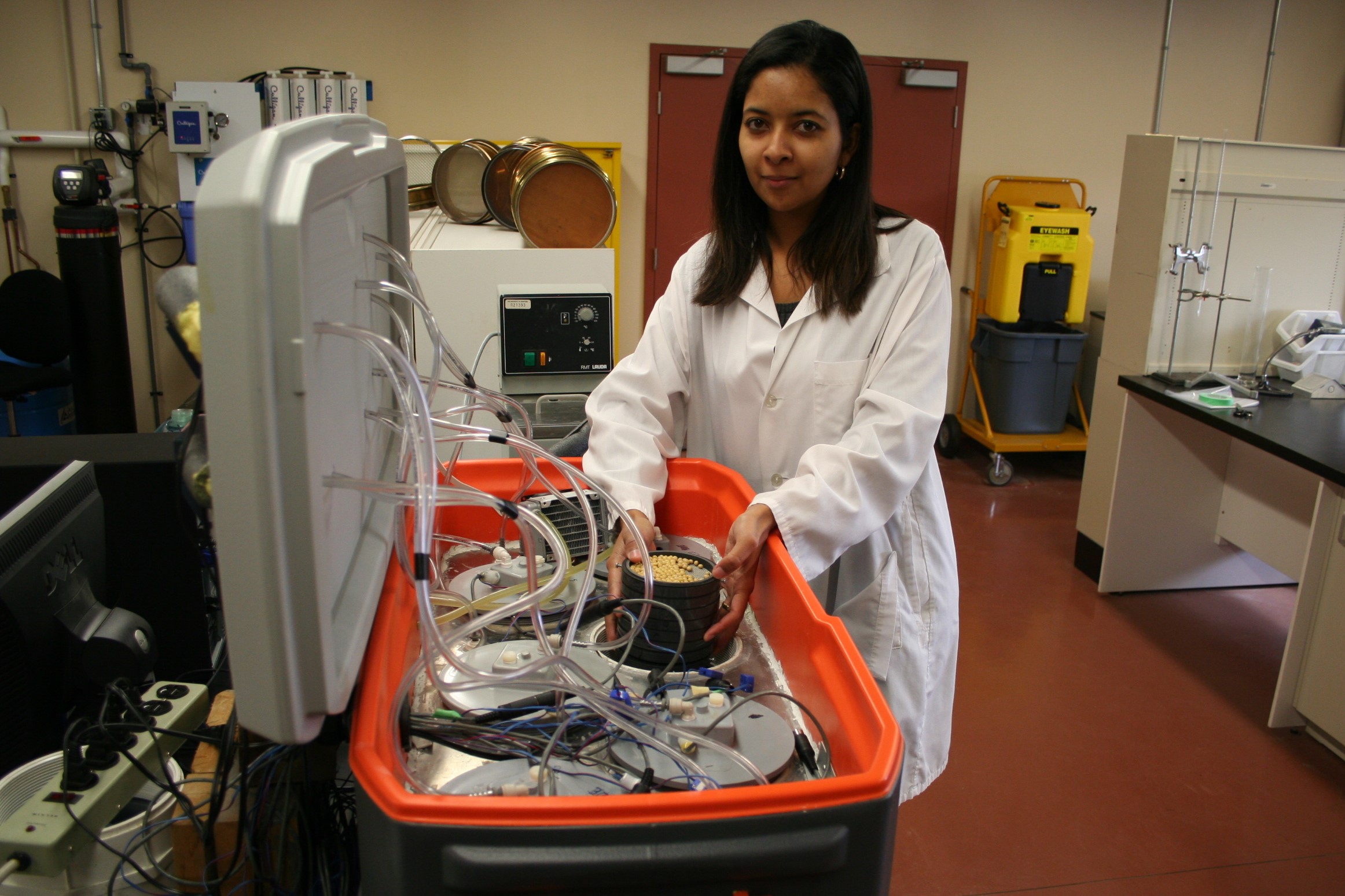Figure 1. Bioystems Engineering MSc student, Lina Diaz Contreras, putting soybean samples in her custom-designed EMC-ERH chamber at the Grain Storage Research Lab (University of Manitoba).
Jitendra Paliwal, Rani Ramachandran and Lina Diaz Contreras, Department of Biosystems Engineering, University of Manitoba
MANITOBA’S SOYBEAN-GROWING BELT receives abundant rain, especially during the month of August, meaning moisture levels at harvest could be as high as 20%. These kernels need to be dried to a safe moisture level (13%) to avoid spoilage and to ensure safe storage.
Even during storage, the conditions inside the bin including temperature and relative humidity could cause biochemical changes in these nutrient-rich beans. Hence, it is important to understand the moisture content at which the soybeans reach equilibrium with their storage environment (also called the Equilibrium Moisture Content (EMC)). Although extensive research and considerable amount of data are available for other traditionally-grown Manitoba crops, little information is available on the EMC for Manitoba’s soybeans.
Depending on the weather and storage conditions and post-harvest moisture of the kernels, soybeans undergo many micro- wetting and drying cycles or freezing and thawing cycles, affecting their uptake and release of moisture (also called adsorption and desorption). These cyclic variations in moisture of raw agricultural commodities are complicated physical processes during which moisture and heat are transferred through the material and exchanged with the environment. As the environmental conditions are a key factor in determining the EMC, a relationship between EMC and the Equilibrium Relative Humidity (ERH) of the inter-granular air of bulk soybeans at different storage temperatures need to be established.
A recent study funded by MPSG, led by Dr. Jitendra Paliwal’s Grain Storage Research Lab at the University of Manitoba aims to do just that. The study focuses on the effect of postharvest storage conditions and variety on the sorption characteristics of soybeans grown in Manitoba.
Considering the large variations in Manitoba’s daily and seasonal temperatures, and relative humidity conditions, the possi- bility of condensation and over-drying of the beans is included in this study. Adsorption and desorption characteristics of three different varieties (Podaga R2, Lono R2, Akras R2) of soybeans grown in Manitoba are currently being measured in a custom-de- signed dynamic setup (Figure 1).
Initial results show the importance of maintaining lower storage temperatures at any given moisture content; because at elevated temperatures, soybeans equilibrate with the air causing high relative humidity inside the bin (Figure 2). Warmer storage conditions in a bin could generate high-moisture air pockets due to condensation, triggering mould growth. This shows the importance and the dependence of these parameters during storage and emphasizes the need for periodic monitoring of the bin.
In the light of the research findings, it is recommended to store soybeans at lower temperature (less than 10°C) to reduce the relative humidity thereby minimizing spoilage. Once this study is complete, the researchers plan to make the data publicly available online for producers to refer to. Such work will provide a valuable framework to tackle bigger issues that constrain production and marketing of soybeans.

Figure 2. Comparison of the relative humidity of soybeans at 13% moisture content stored at 10°C and 30°C. Storage at high temperature results in higher relative humidity, which should be avoided to prevent soybeans from spoilage.

